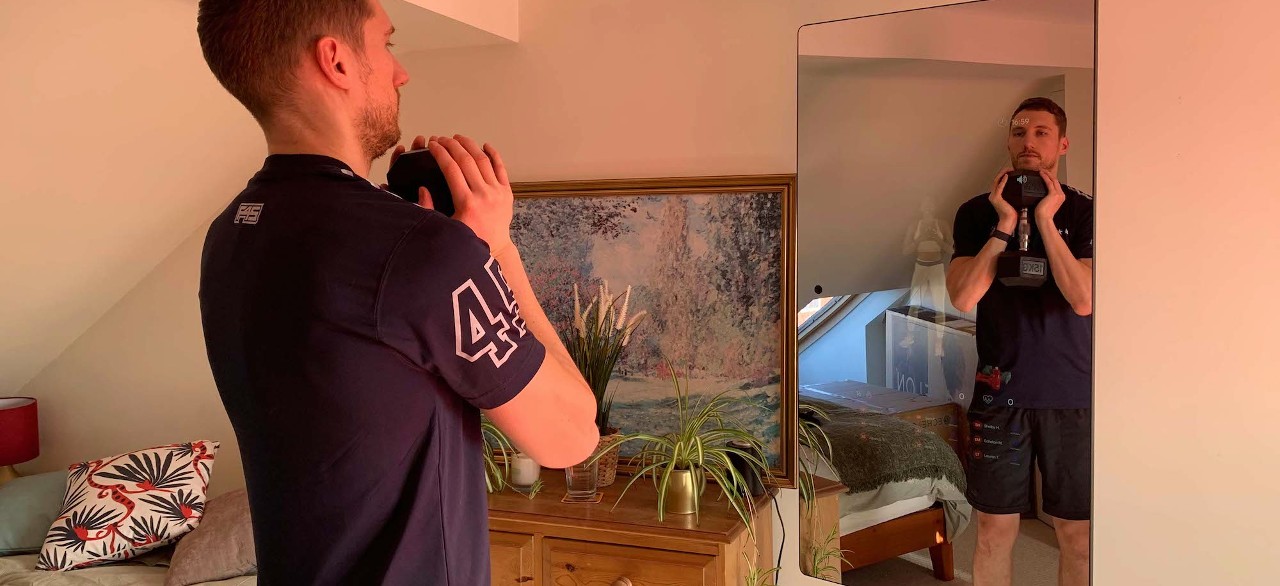Our Verdict
Smart hardware let down by overly simplistic software.
For
- Vast library of workouts
- Plenty of fast, effective classes
- Progressive programming, – eg 7 Day Killer Core
- Live leaderboard for motivation
Against
- Bulky stand
- Clunky software
- Requires you to own equipment, such as dumbbells
- No camera for interactive personal training
You can trust Coach
Echelon Fitness might not be a household name in the UK, but the Tennessee-based company has been pioneering smart exercise equipment to rival the likes of Peloton and SoulCycle since 2017.
The brand, founded by entrepreneur Lou Lentine, has released some of the best spin bikes (Coach gave the Echelon EX-3 bike a four-star review), along with the Echelon Stride folding treadmill and Echelon smart rowing machine – pitching itself as a more accessible and affordable alternative to its celebrity-endorsed competitors.
Now Echelon has released an interactive workout mirror, the Reflect 50in Smart Fitness Mirror, as a portal to bring its 2,000-plus workout classes to life in your living room. This pits it against the likes of US rivals Mirror, Tempo, Tonal and NordicTrack, along with Germany’s VAHA, but could Echelon be the smartest fitness mirror of them all?
The Set-Up
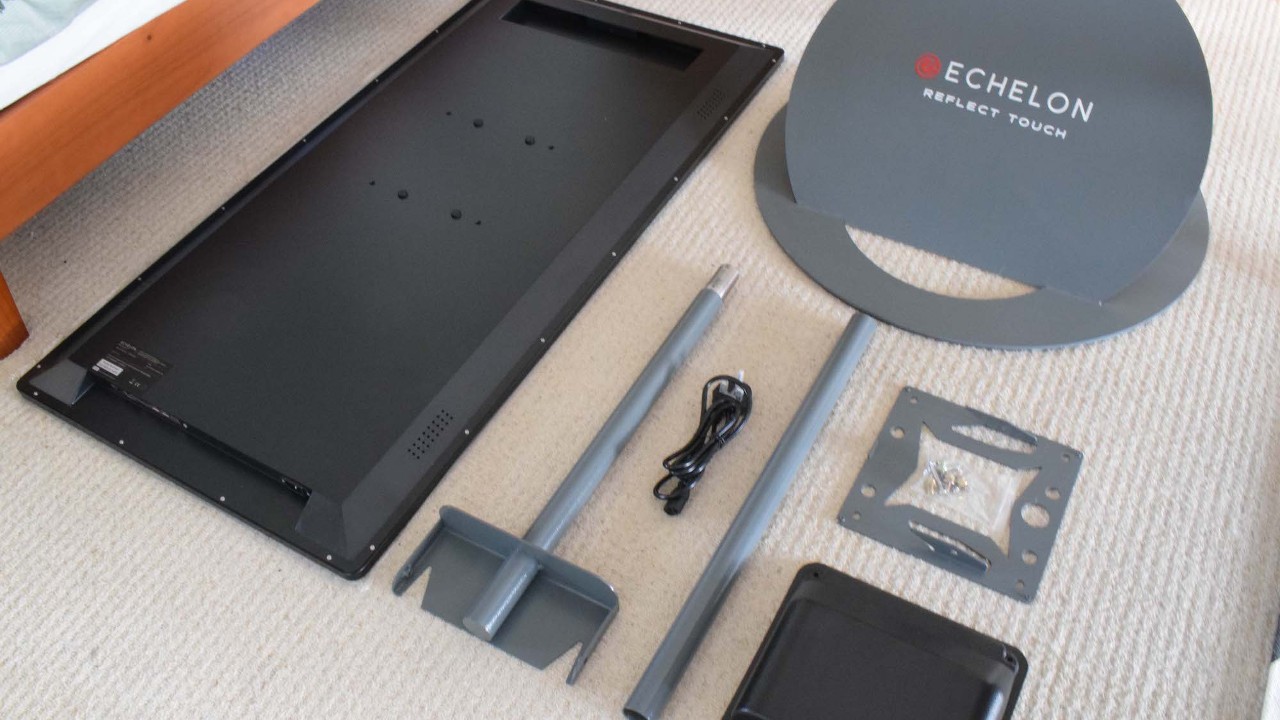
Attached to its chunky stand, the Echelon Reflect is unmistakably built for fitness. But sans stand, mounted on the wall, the Reflect becomes a more inconspicuous, living-room-worthy piece of furniture. It measures 48in (121cm) tall by 24in (61cm) wide and 2in (5cm) deep, and weighs 24.5kg.
Given that I would be returning the mirror in a couple of months and can’t remember where I left the Polyfilla, I opted to use its stand, earmarking a corner of my top-floor bedroom to set it up. Thankfully its weight – 20kg lighter than the VAHA X – made it possible to lug it up the stairs and into position.
Unpacked from its two cardboard boxes, the mirror and base can be assembled solo. However,minor details made me question the precision of its manufacturing. Two heavy metal pipes connect the base with the screen, held in place by tiny screws that feel somewhat inadequate; and, frustratingly, the mirror doesn’t align with the front of its base.
Accompanying accessories, such as resistance bands or light dumbbells, or even a care kit to keep the screen clean, are also absent. Setting aside these hang-ups, the mirror looks suitably polished, with nano crystal coating and, supposedly, fingerprint-resistant glass (while you will smudge the screen every time you touch it, these are easily wiped away with a dry cloth).
Once plugged into the mains, a tap of the Echelon logo fires up its touchscreen and the set-up – connecting to WiFi and completing your profile – is relatively easy. After a couple of minutes I’m ready to pick a workout from the home screen’s vast library of class categories.
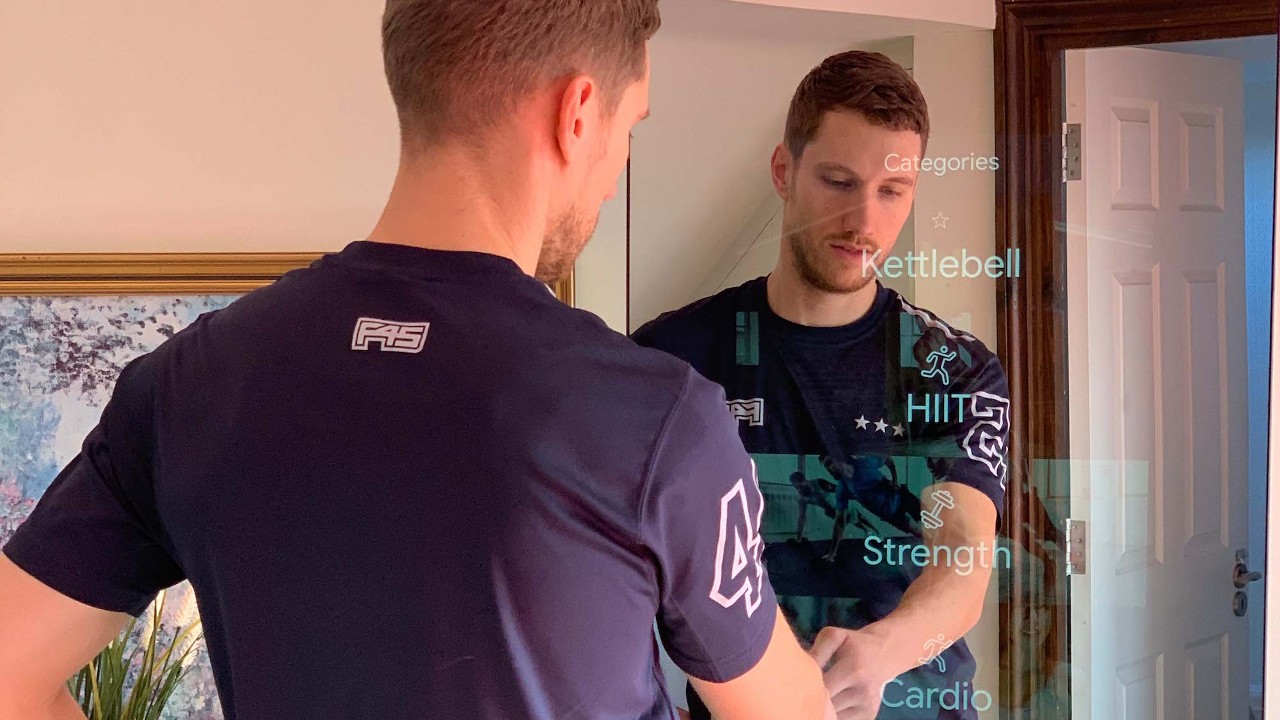
These range from HIIT, cardio, kettlebell and yoga, to Zumba, boxing, meditation and even workouts in French or German. Along the bottom of the screen you can navigate to live classes and your progress section to monitor weekly gains.
The mirror doesn’t require a companion app to operate it, but it is compatible with Strava, Apple Health and Fitbit, and you can sync your Spotify account to it.
There is also a dedicated Reflect app for iPhone and Android, which I assumed would provide further analytics and the ability to track your progress on the move, but I couldn’t connect my device to the app or my music despite several attempts.
The Experience
IT headaches aside, the Reflect mirror workout experience is enjoyable. In my first class, an on-demand 20-minute full-body strength workout with trainer Ashley, the miniaturised coach with a California accent appears in the middle of the screen, while a timer ticks down in the top right corner.
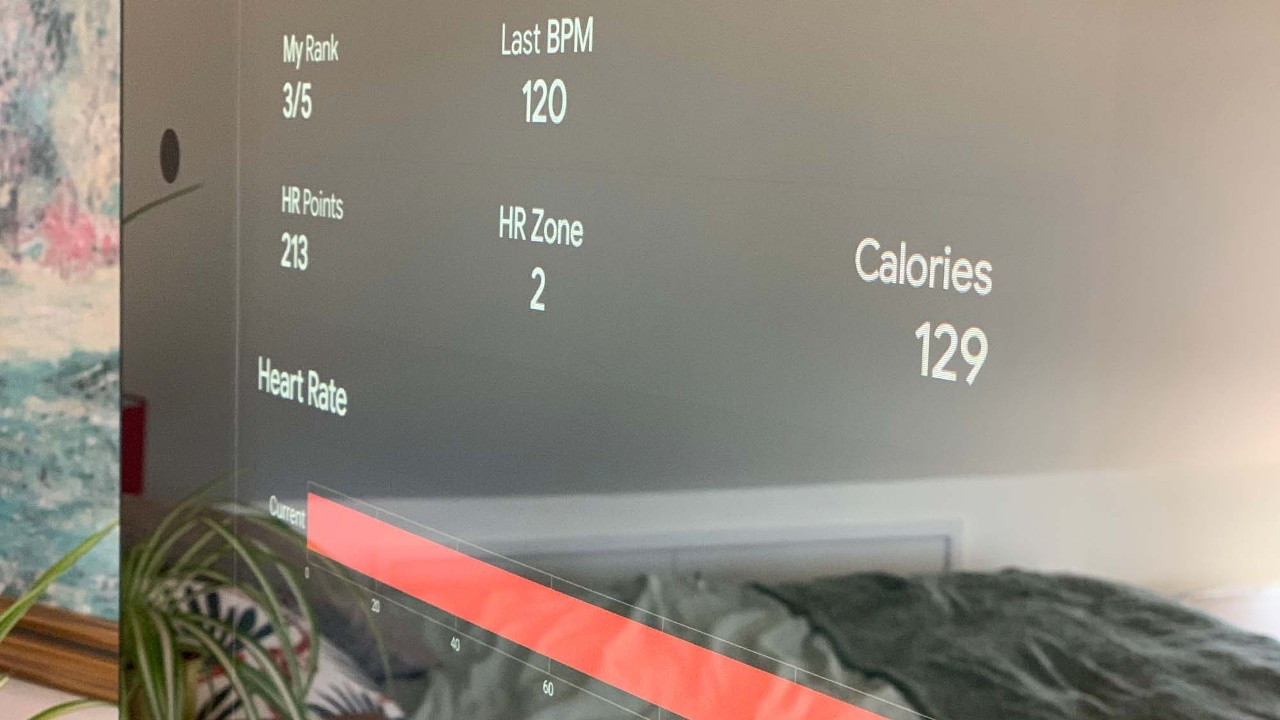
Below Ashley is the live leaderboard, with the profiles of everyone taking the class, alongside a running total of each user’s “heart zone points”. I later discover this number correlates to your performance in the class. By syncing a chest strap heart rate monitor with the mirror, you can track your pulse and calories burned live on screen.
However, thanks to my technical difficulties, all I can do is count down the seconds that remain as Ashley leads us through a block of Romanian deadlifts, bent-over rows, reverse lunges and Superman planks. It’s certainly effective – descending rest periods ensure my lungs, as much as my hamstrings, are burning by the finish.
When the 20 minutes are up, the class is shown a breakdown of the calories we’ve burned and the points earned, plus where we finished on the leaderboard. Since I didn’t use my HR tracker, I’m languishing at the bottom of the class, which is demoralising but understandable.
Next I’m pushed through to my weekly progress report, then back to the home screen to find a suitable warm-down class. At this point, I’m struck by both the sheer abundance of workouts and the lack of detail to differentiate one from another.
I count 12 strength workouts named “Total Body”, 15 cardio classes titled “Arms & Abs”, and around 20 HIIT sessions simply yet ambiguously called “HIIT”. You can only filter by instructor or duration: 10, 15, 20 or 30 minutes. Classes aren’t listed under difficulty and there are no previews or a breakdown of the moves to let you know what’s in store.
As a result, my 20-minute “Athletic” yoga routine with Nikita turns out to be an advanced forearm headstand class. It’s a good challenge, but a world away from the active recovery vinyasa flow I was after.
Undeterred, a few days later I embark on a 7 Day Killer Core programme with Echelon head trainer Sam Jackson. Day one is a simple max plank hold to set a benchmark to beat at the end of the plan. The following days vary from a 10-minute 45 seconds on, 15 seconds off core circuit to a more challenging 20-minute drill with increasingly advanced moves.
The bite-size classes and use of progressive overload prove an effective way to keep me coming back for more – plus it’s hard to skip a workout when you have to walk past a 6ft-tall reminder every day. Seeing my reflection meant I could correct form flaws mid-class and by day seven, I extended my max plank hold by 37 seconds.
Once I managed to pair my HR monitor with the Reflect mirror, I also saw the benefit of the live leaderboard when diving into one of the 20-minute HIIT classes. In a neck-and-neck duel with a user ominously called “TheHunter”, I found myself kicking on right to the end of the workout when I could have slacked off.
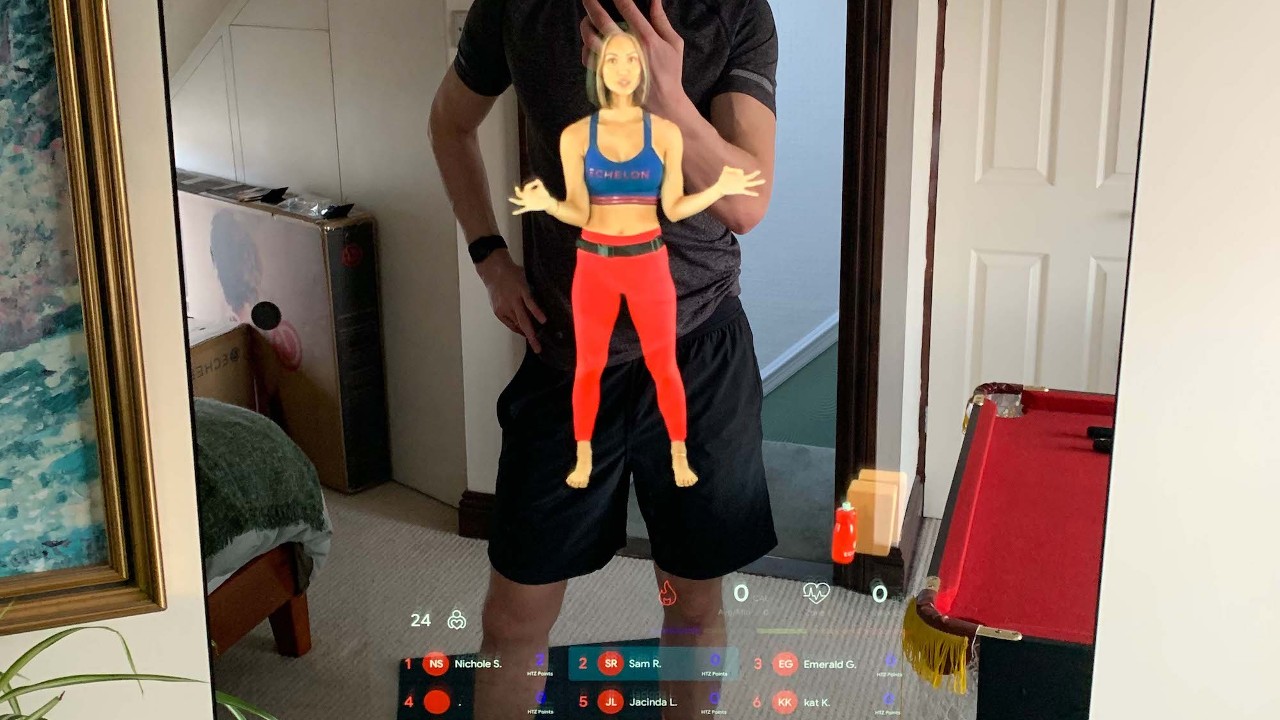
I was also encouraged by the trainer shouting out words of encouragement to me personally, given it was a live class rather than on-demand.
“You’ve got this, Sam,” she said as I took the lead, adding, “We have the same name so I already like you!”
Although aware Sam could only see my username and points tally, it provided a valuable dose of accountability during the workout, which is often half the battle when it comes to completing an exercise class, and kept me engaged from warm-up to warm-down.
The Verdict
After two months using the Echelon Reflect, my weekly progress report shows all the days I trained – and where my enthusiasm started to wane. After the initial novelty factor wore off, I started to find the workouts repetitive and uninspiring. In strength or yoga classes, where the goal isn’t to push your heart rate sky-high, there are no metrics to chase.
By contrast, with rival tech brands such as Fiit, you can count reps scored in strength classes, or track your speed on a connected cardio kit, to give you a total score to beat. Fiit’s classes are also more visually and sonically stimulating and their trainers, like the A-list cast recruited by Peloton, keep workouts engaging and entertaining.
That last point is something I also encountered with VAHA, suggesting it’s an issue with the category more generally. But at least the German company recognised the benefit of making its mirror two-way, including a camera built into the device for 1:1 PT sessions and the potential of instant feedback to correct form, even with pre-recorded on-demand classes.
Sadly, the one-dimensional Echelon Reflect lacks this level of innovation or future-proofing. Its screen doesn’t offer the interactivity of Mirror and VAHA, or the premium accessories and bonus storage capacity offered by NordicTrack.
Given you could technically access every class via the Reflect app on your mobile, it also raises the question of why you’d sacrifice valuable living space in your home for a mirror, when all the workouts are available in your pocket. That said, at £1,799 the Reflect Mirror is £151 cheaper than the VAHA X, and £700 less than NordicTrack’s Vault, so at least the company is, true to form, supplying a more affordable option.
At the time of writing, Echelon tells us it is working on a next-generation device with two-way capability, so perhaps these issues will be rectified. But if smart mirrors are meant to be the next frontier for home fitness tech, for me at least, Echelon hasn’t cracked it with its first attempt.
Buy from Echelon | £1,799, membership £29.99 a month (first 30 days free)

Sam Rider is an experienced freelance journalist, specialising in health, fitness and wellness. For over a decade he's reported on Olympic Games, CrossFit Games and World Cups, and quizzed luminaries of elite sport, nutrition and strength and conditioning. Sam is also a REPS level 3 qualified personal trainer, online coach and founder of Your Daily Fix. Sam is also Coach’s designated reviewer of massage guns and fitness mirrors.
